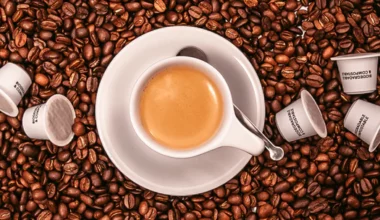In a world filled with a myriad of coffee choices, each sip becomes a reflection of individual taste, lifestyle, and cultural influences. From the type of beans to the brewing method, consumer preferences when it comes to coffee are as diverse as the cultures that enjoy it. In this blog, we’ll delve into the factors that influence coffee choices and how consumer preferences shape the way we experience this beloved beverage.
1. Bean Variety and Origin:
The journey of a coffee bean begins in the regions where it’s cultivated. The choice between Arabica and Robusta beans and the specific origin (Ethiopia, Colombia, Kenya, etc.) play a significant role in flavor and aroma. Some consumers prefer the fruity and complex notes of Arabica beans, while others appreciate the robustness of Robusta beans.
2. Roast Profile:
Roasting is an art that transforms green coffee beans into the aromatic, flavorful beans we recognize. Roast levels vary from light to dark, each offering a unique flavor profile. Light roasts preserve the bean’s original characteristics, while dark roasts offer rich, bold flavors. Consumer preferences for roast profiles depend on the desired taste experience.
3. Brewing Methods:
From pour-over to espresso machines, the brewing method significantly affects the coffee’s flavor and strength. Each method extracts different compounds, resulting in varied taste profiles. Some consumers are drawn to the full-bodied richness of French press, while others enjoy the clarity of flavor from a pour-over.
4. Sustainability and Ethics:
An increasing number of consumers consider the ethical and environmental aspects of their coffee choices. Fairtrade, organic, and shade-grown coffee appeal to those who value sustainable practices and support for coffee-growing communities.
5. Caffeine Content:
Caffeine sensitivity influences preferences. Some opt for decaf to enjoy the flavors without the buzz, while others seek high-caffeine options for that extra kick. This choice often depends on lifestyle, health considerations, and personal habits.
6. Flavor Profiles and Additions:
Coffee enthusiasts have diverse palates, leading to preferences for specific flavor notes. Some prefer the fruity, floral, or nutty undertones of certain beans. Additionally, choices such as adding milk, cream, sugar, or flavor syrups allow customization to match individual taste preferences.
7. Cultural Influences:
Consumer preferences are often shaped by cultural backgrounds. For example, espresso-based drinks like cappuccinos and lattes are popular in Europe, while in Ethiopia, traditional coffee ceremonies with richly brewed coffee take center stage.
8. Convenience and Lifestyle:
The pace of modern life has led to an increased demand for convenience. Single-serve coffee pods and ready-to-drink cold brews cater to busy individuals seeking a quick caffeine fix. On the other hand, those who value the ritual of brewing might opt for manual methods.
Coffee choices are as unique as the individuals making them. From the origin of the beans to the preferred brewing method, consumer preferences reflect personal tastes, values, and cultural backgrounds. This diversity enriches the coffee experience, creating a tapestry of flavors and traditions that bring people together. So, the next time you sip your favorite cup of coffee, remember that your choice is a reflection of your individuality and an homage to the world’s most beloved beverage.




